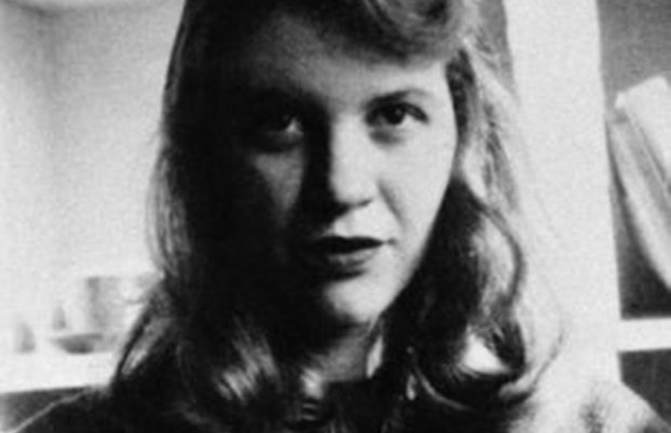- Folio No. 9
- About
- Feral Parrot : The Blog
- INTERVIEWS
- SUBMISSIONS
-
ISSUE ARCHIVE
- PRINT Chapbook No.6 Healing Arts
- Online Issue No.9
- Online Issue No.1 Fall 2016
- Online Issue No.2 Spring 2017
- ONLINE Issue No.3 Fall 2017
- PRINT Vol 72 No 2 Fall 2017
- PRINT Vol 73 No.1 Fall 2018
- ONLINE Issue No. 4 Fall 2018
- Online Issue No.5 Summer 2018
- FOLIO No.1 Fall 2018 VOTE
- ONLINE Issue No.6 Fall 2018 Fall Spirituality
- FOLIO 2 Fall 2019 Celebrating Dia De Los Muertos
- FOLIO No.3 -- Moon Moon Spring 2019
- FOLIO No.4 Celebrating New PCC Writers
- FOLIO No.5 City of Redemption
- FOLIO No.6 Spring 2020
- FOLIO No. 7 - Winter 2021 Into the Forest
- 2022 Handley Awards
- Inscape Alumni Board
- PRINT Chapbook No. 7 Healing Arts
- Blog
- Untitled
 Bettman/Getty Images Bettman/Getty Images by Becky Nava Today is 55 years since we lost one of the most iconic women in the history of literature. A polarizing, morbid fascination accompanies any mention of this delightfully complex woman. Perhaps her death left an impression of her life, but to label her as yet another tortured genius is not only dismissive, it altogether counters the identity she worked so hard to craft. Plath championed the notion of women as more than static stereotypes and echoed multiplicity in their identities. Praise of her work should be accompanied with holistic acceptance of her conflicting traits. Her only novel, The Bell Jar, remains a cornerstone of the portrayal of mental health in literature. Her words, metaphors, and anecdotes, are at once captivating and relatable, working to express the loneliness and shame that arise from mental illness. One of her most notable metaphors, the fig tree, made its way into contemporary pop culture on an episode of Master of None. To Aziz, the protagonist, the fig tree represents the potential that life holds along with the inevitable disappointment in the wake of decision making. Yet beyond disappointment, Plath’s intent was to highlight the lack of social and professional mobility for women. She worked hard to draw attention to how women were both forced to adopt a distinct identity and happily don it for life. The fig tree also comes to symbolize Esther’s growing anxiety. She wrote and illustrated children’s books like the whimsical “The It Doesn’t Matter Suit” about a boy who receives a suit he can wear anywhere, for any occasion, and as a result, never takes it off. The nostalgic story, “The Bed Book”, lists and describes various types of beds, a seemingly simple, yet creative take on a bedtime story. Her life was spent doodling and drawing. Her perspective - childlike and uninhibited. Yet, her self-portrait entitled “Triple-Face Portrait” is hauntingly self-aware and telling of a deep rooted sense of disconnect, both reflective of a soul at war with itself and society. From a societal standpoint, the fragmented faces show the ever evolving identities imposed upon women, with an aim to highlight the repercussions of such conflicting and damaging expectations within a single being. The raw technical prowess she possessed only adds to the whimsy and childlike facets of her personality, oft neglected from the narrative, along with the under appreciated level of irony and authenticity of her work. Plath was real as hell. Her work should be remembered as a testament to the life that she held on to for as long as she could,
0 Comments
|
IMPORTANT NOTE:
PCC Inscape Magazine, housed at Pasadena City College, is following Coronavirus protocols. At this time our staff continues to read submissions and publish web content. Note:
Blog Posts reflect the opinions of the writer and not the opinions of Pasadena City College or Inscape Magazine Editorial Staff Members. Archives
December 2023
Categories
All
|


 RSS Feed
RSS Feed